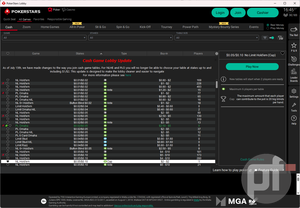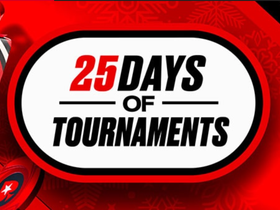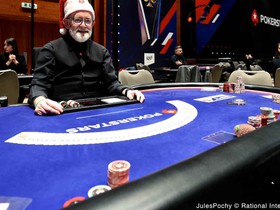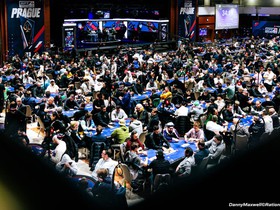Players on PokerStars’ global online poker site will no longer be able to select their own tables or seats when playing No-Limit Hold’em or Pot-Limit Omaha cash games at stakes up to and including $1/$2.
This change comes as part of a new automated seating system, known in the industry as the Blind Lobby, which PokerStars is branding as “Seatfinder.” The system was officially implemented PokerStars.com on Tuesday, July 15, following years of trials in segregated Southern European markets.
It does not apply to players playing on the site’s US and Ontario markets.
Previously referred to as “Seat Me,” the system removes the ability for players to choose specific tables. Instead, players simply select a stake and buy-in amount, and are then automatically seated at an available table. This aims to replicate the experience of live poker, simplify the lobby interface, and reduce clutter.
So, how does this differ from the existing Quick Seat feature already present on PokerStars? While Quick Seat offers similar functionality to Seat Me or Seatfinder, the fundamental difference is that this new system is now only option for affected stakes. Players no longer have any option to manually select their table or seat.
PokerStars first introduced the mandatory blind lobby concept in Spain in early 2017. It was part of a wider industry effort to limit the effectiveness of seating scripts and reduce “predatory” behavior that targets recreational players.
After initial implementation and refinement, the operator expanded the system to other Southern European markets, including France and Portugal in 2018, followed by Italy a year later. At the time, PokerStars had announced its intention to bring the system to the global dot-com market by the end of 2018.
That plan, however, never materialized—until now.
A Compromise at Last
Seven years later, PokerStars has finally introduced a compromise for its global market. Specifically, the ability to choose one’s table and seat has been removed only for games at $1/$2 stakes and below in NLHE and PLO. For higher stakes, players still retain the freedom to choose both table and seat.
“With this update, we’re balancing efficiency with player preference,” said Dan Price, Head of Poker Games & Performance at PokerStars, in an official statement. “Seatfinder improves the experience for new and casual players while respecting the dynamics required for starting tables at higher stakes.”
While the new system brings several benefits, it is not without drawbacks. A number of players have expressed concerns over the inability to observe games before joining. Others argue that the blind lobby system hinders the formation of games at off-peak times, encourages short-handed play, and causes tables to break more frequently. Some players feel it ultimately makes the game more difficult, contrary to its intended purpose.
Additionally, there is concern among high-volume players that the change could reduce their win rates. Currently on PokerStars, players can play a maximum of four tables simultaneously. Now, with the blind lobby system in place at lower stakes, players are calling for this cap to be raised.
In response, PokerStars has acknowledged the feedback and stated that it is actively reviewing whether the table cap can be increased.
Returning to the cash game lobby changes, this marks a big change to the way players interact with the PokerStars cash game lobby. For the first time, the ability to manually select tables and seats has been eliminated—albeit only at the lower stakes, where the majority of the player base participates.
The change also affects other formats, including Fixed Limit Hold’em, Fixed Limit Omaha, Draw games, Badugi, Stud variants, and 6+ Hold’em, though the exact affected stakes vary by game type.
PokerStars New Cash Game Configuration: Stakes & Game Formats Impacted
| Game | Stakes |
|---|---|
| NLH and PLO | Up to and including $1/$2 |
| Limit Hold’em & Omaha, Draw, Badugi | Up to and including $1/$3 |
| Limit Stud, Razz | Up to and including $3/$6 |
| 6+ Hold’em | Up to and including $2 ante |
PokerStars states that this move is designed to “establish a more welcoming environment for new and less experienced players.” However, the operator also emphasizes that it will continue to monitor player feedback and internal data before making any further adjustments.
Given that PokerStars has years of experience using this system in Southern European markets, it is in a strong position to assess the impact of the transition. Notably, the Blind Lobby system has not been implemented in the US or Ontario markets.
In the dot-com market, the operator appears to have struck a middle ground, applying Seatfinder at lower stakes while retaining traditional table selection at higher limits.
Elsewhere in the industry, most operators, including GGPoker, WPT Global, PartyPoker, and 888poker, still allow players to choose their tables and seats. Exceptions include Unibet Poker. In the regulated US online poker market, all three established operators: WSOP, PokerStars, and BetMGM Poker, offer table selection, except for newcomer BetRivers Poker.








